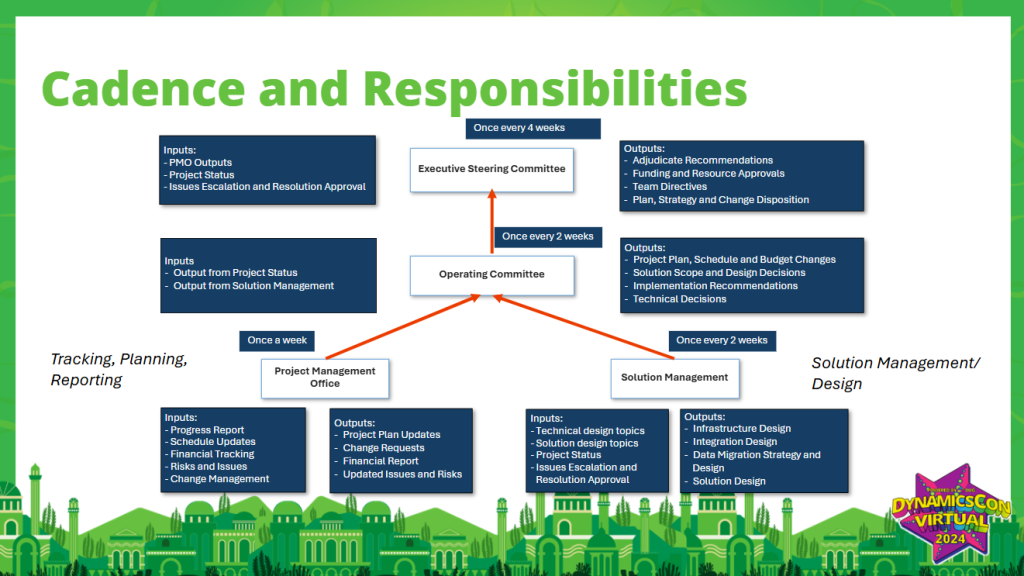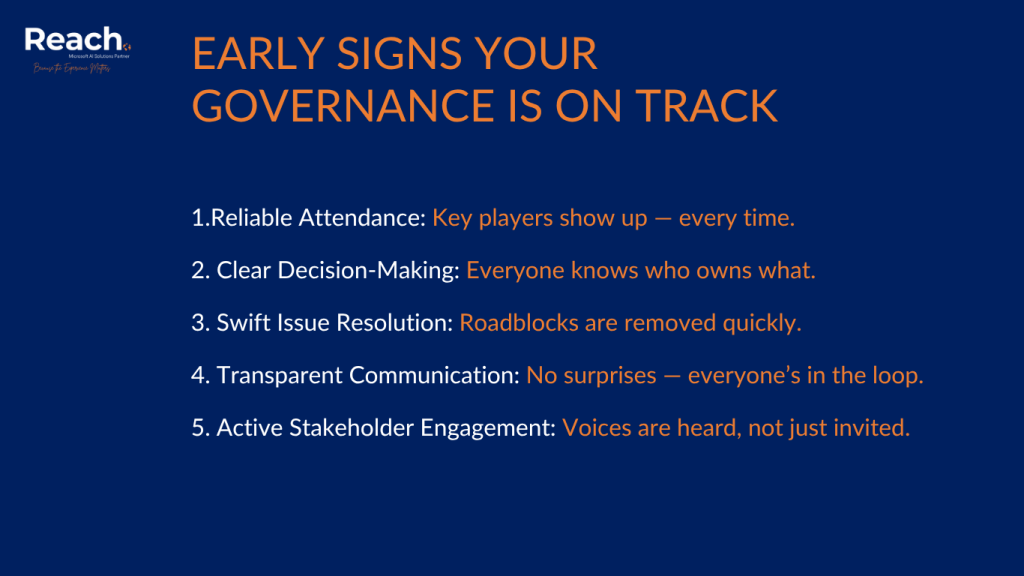This is the sixth in our series exploring key insights on implementation methodologies for Microsoft Dynamics 365.
The Foundation of Project Success: People and Process
While methodology provides the framework, it’s the people and their structured interactions that determine project success. “Leadership on these projects has to include leading cross-functional teams, coaching stakeholders, ensuring role clarity across project management, solution architects and consultants. And that’s a tall task, a tall order.” states Nash Simeunovic.
For organizations implementing Dynamics 365 team roles and cadence matters, especially for those scaling across regions or business units, a strong governance model isn’t optional—it’s essential.
Essential Delivery Roles
There are five critical roles that form the backbone of successful Dynamics 365 implementations:
Understanding the different Dynamics 365 team roles is crucial for effective collaboration and project success. The success of any implementation heavily relies on clearly defining these Dynamics 365 team roles and ensuring each individual understands their responsibilities. Additionally, recognizing the dynamics of these roles within the project contributes to a more efficient workflow.
1. Executive Sponsor
Primary Responsibility: Owns the business case and ensures strategic alignment
Organizations are typically getting onto the new ERP when they’re ready for growth or acquisition or when there’s a change coming. The executive sponsor must:
- Champion the initiative at the C-suite level
- Remove organizational obstacles
- Make critical business decisions quickly
- Ensure resource availability
- Maintain stakeholder alignment
2. Project Manager
rimary Responsibility: Owns delivery execution and reporting
The PM and project management office are responsible for tracking, planning, and reporting. Key responsibilities include:
- Coordinating across workstreams
- Managing dependencies and risks
- Tracking budget and timeline
- Facilitating communication
- Escalating issues appropriately
Many times, we see clients who outsource the PM role to a third party… That can work. However, it’s critical that we have a clear set of responsibilities and authority given to the PM.
3. Solution Architect
Primary Responsibility: Ensures cross-functional integrity
Keeping solution architects engaged throughout the project is essential. “We tend to keep solution architects throughout the project, even if it’s just in the advisory role because they help us with the handoffs between the phases… no knowledge is then lost.”
The solution architect:
- Designs the technical solution
- Ensures integration points work
- Validates architecture decisions
- Guides best practice adoption
- Manages technical debt
4. Business SME (Subject Matter Expert)
Primary Responsibility: Ensures solution meets operational needs
The partnership between SMEs and consultants is critical: “Subject matter experts bring tons of internal business process knowledge. It’s key that these two sets of project team members actually start speaking the same language sooner than later.”
Business SMEs must:
- Define business requirements
- Validate solution design
- Lead user acceptance testing
- Champion change management
- Train end users
5. IT / Lead Developer
Primary Responsibility: Manages system, code, and integrations
The technical team ensures the solution is properly implemented, integrated, and maintained:
- Configure the system
- Develop custom code where necessary
- Manage integrations
- Ensure security compliance
- Support performance optimization

The Governance Cadence That Works
There are three-tier governance rhythm that has proven successful across numerous implementations:
Weekly: Workstream-Level Reviews
Once a week there has to be a checkpoint. These operational meetings focus on:
- Progress against plan
- Immediate blockers
- Resource needs
- Risk identification
- Next week’s priorities
Sometimes the stakeholder pops in to make sure they understand what’s going on, but these meetings primarily serve the implementation team.
Biweekly: Cross-Functional PMO Alignment
These sessions ensure different workstreams remain synchronized:
- Integration point validation
- Dependency management
- Resource reallocation
- Issue resolution
- Design consistency
Monthly: Executive Steering Committee Updates
These strategic sessions cover:
- Overall project health
- Budget and timeline status
- Major decision points
- Strategic alignment confirmation
- Business priority changes
Critical Success Factors for Governance
- Clear Role Definition
- Authority Alignment
- Financial Transparency
- Dedicated Time Commitment
Scaling for Complexity
Governance needs vary by project type:
Rapid Projects
- Simplified roles (possibly combined)
- Lighter touch governance
- Fewer formal checkpoints
Standard Projects
- Full role separation
- Regular cadence adherence
- Structured reporting
Enterprise Projects
These require:
- Multiple sub-teams
- Regional governance structures
- Escalation hierarchies
- Executive oversight committees

Early Indicators of Governance Success
Strong governance shows:
- Consistent meeting attendance
- Clear decision ownership
- Timely issue resolution
- Transparent communication
- Engaged stakeholders
The Ownership Transition
One of our clients had a team in place and they devoted 50% of their time to the project and showed how responsibilities shifted over time.
Key transition indicators:
- Clients can demo the solution
- Internal teams lead meetings
- Business owns decision-making
- Technical knowledge transfers complete
- Support processes established
Making It Real
Implementing governance should include:
- Document Everything: “Use this slide to guide the conversation between a partner and a customer to see who’s responsible for what.”
- Start Early: “Have the cadence set up from the beginning”
- Measure Effectiveness: “If the team, client’s team is able to demo the solution, you know you’re on the right path”
- Adjust as Needed: “Many times this is actually a single group, which is fine”
The Executive Imperative
These endeavors often make or break the year for the organization, also this success creates great opportunities for these individuals to accomplish major milestones in their careers.
The Bottom Line
Strong governance isn’t about bureaucracy—it’s about clarity, accountability, and sustainable success. Without documented roles and regular cadence, even the best methodology will fail.
Have the cadence set up from the beginning, and let’s make sure, regardless of the methodology, that our approach includes solid communication upstream and downstream.
A written, socialized governance model isn’t just best practice—it’s your insurance policy against joining the 65-80% of failed ERP implementations.
In Part 7 of our series, we’ll explore common pitfalls in Dynamics 365 implementations and how to avoid them based on our extensive rescue project experience.

